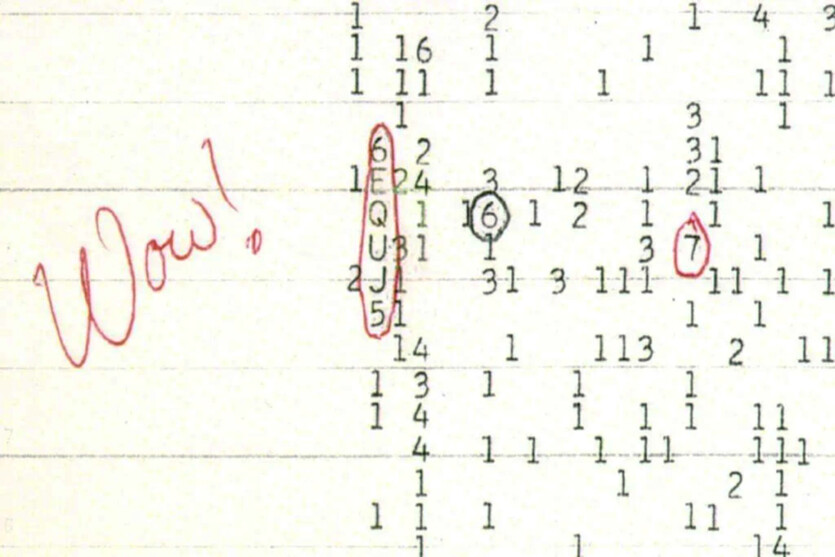
An extremely intense «alien» radio signal «Wow!» detected by the Big Ear Observatory in Ohio, USA, on August 15, 1977, may have a natural explanation, albeit an exotic one.
The signal was so unique that it prompted astronomer Jerry Eman to circle it on a printout and write the word «Wow! Since then, the mysterious signal has puzzled scientists trying to determine its source. A new project dedicated to solving this mystery seems to have found an explanation.
Using archival data from the Arecibo Observatory in Puerto Rico, the Arecibo Wow! Project (AWOW) found similar data. According to the participants, the 47-year-old radio signal was the result of a rare event that caused an extremely bright emission from a huge hydrogen cloud. An article with the results of the study will soon be submitted for review, according to website of the project.
Abel Méndez, an associate professor of physics and astrobiology at the University of Puerto Rico who is leading the research, says he just started to take a deeper interest in the «Wow! «I have to admit, the «Wow!» signal was something of a fluke for me and for many astronomers. So I never paid much attention to it.
The signal attracted so much attention because of its relatively narrow range (a narrow band near the 1420 MHz hydrogen line). At the same time, it lasted 72 seconds and was extremely intense. The limited frequency combined with the extreme intensity led to the assumption that it was an artificial signal from a possible extraterrestrial civilization.
The AWOW researchers wanted to find more similar signals in the Arecibo data from 2017 to 2020. They found such signals, but at a lower intensity. The signals came from interstellar cold hydrogen (HI) clouds. Mendez and the team believe that the «Wow!» signal is of the same nature. Its increased intensity could be the result of a sudden irradiation of the cloud by a powerful short-term source similar to a magnetar. This is a type of neutron star with extremely strong magnetic fields that can excite atoms in hydrogen clouds and cause them to emit unusual radiation.
«This is rare. What’s the probability that a magnet is right behind one of these clouds and has strong enough radiation to excite that cloud, and someone was looking for a signal in that direction at the same time?», — Mendez says.
The AWOW team will conduct further observations with the Very Large Telescope in Chile to identify specific clouds from signals found in the archived data.
Source: Gizmodo



Spelling error report
The following text will be sent to our editors: